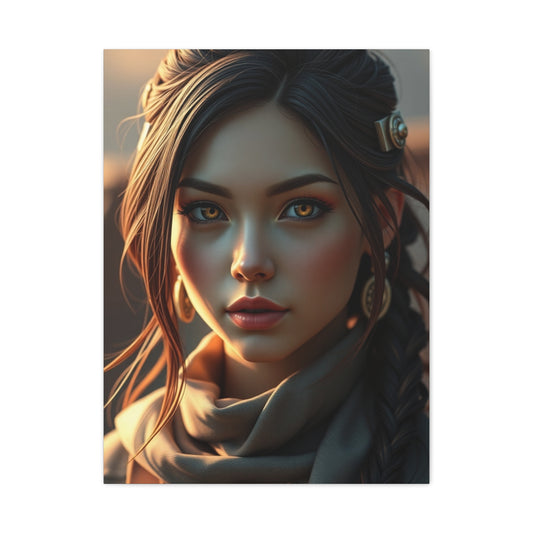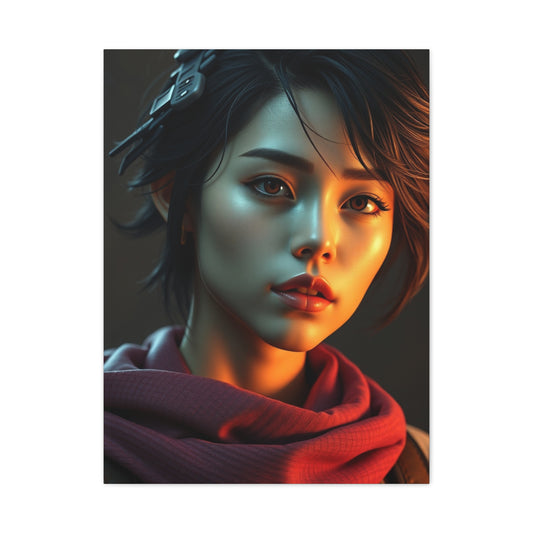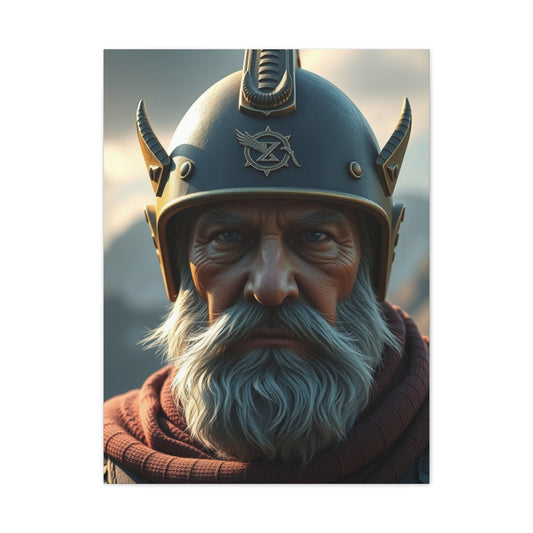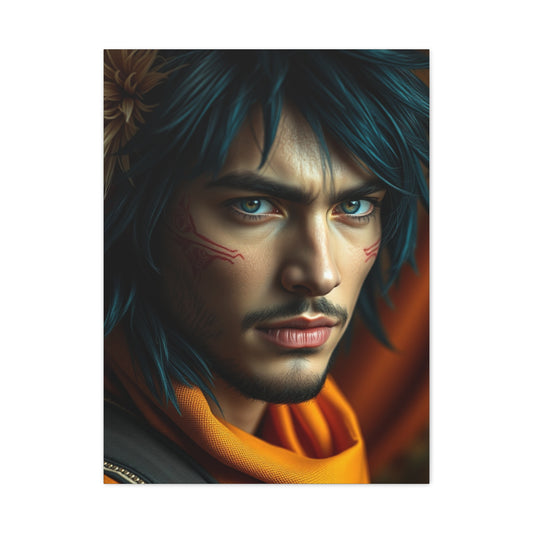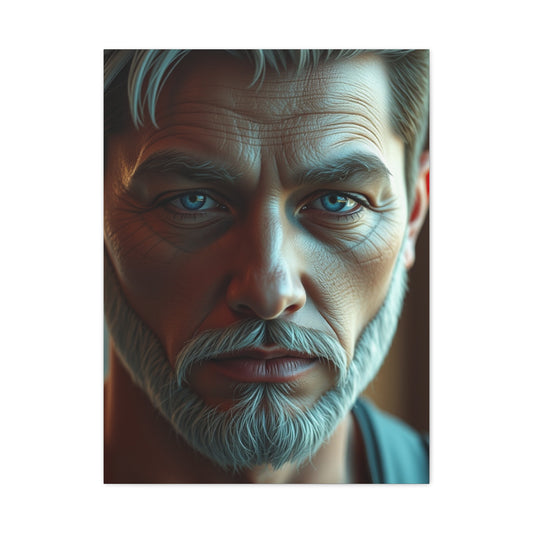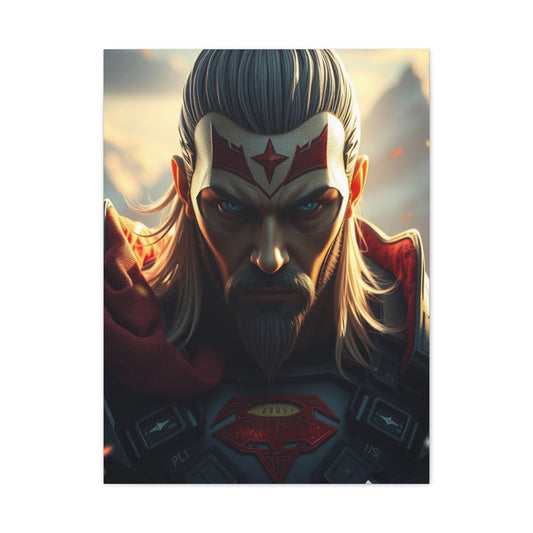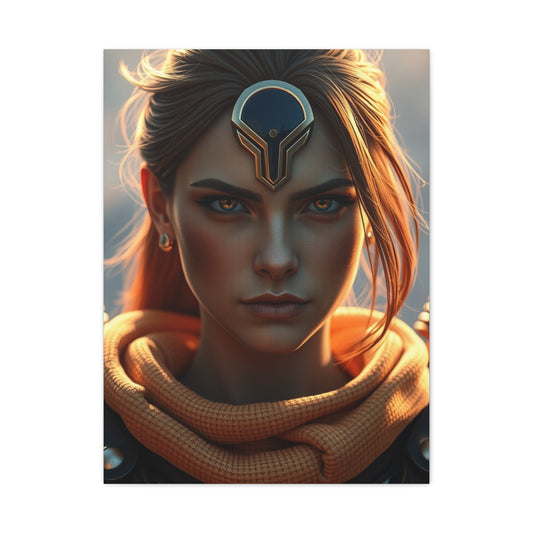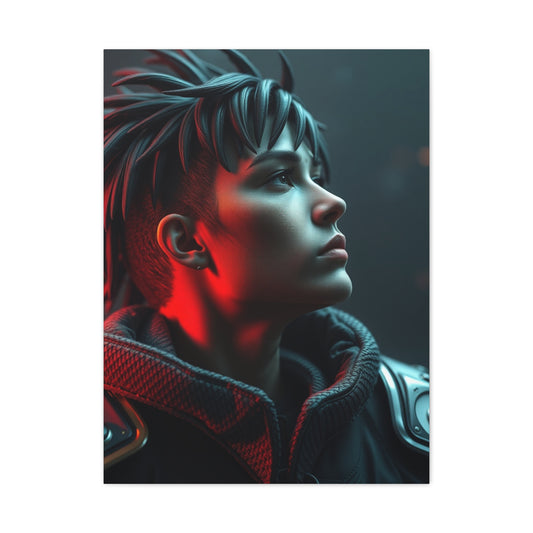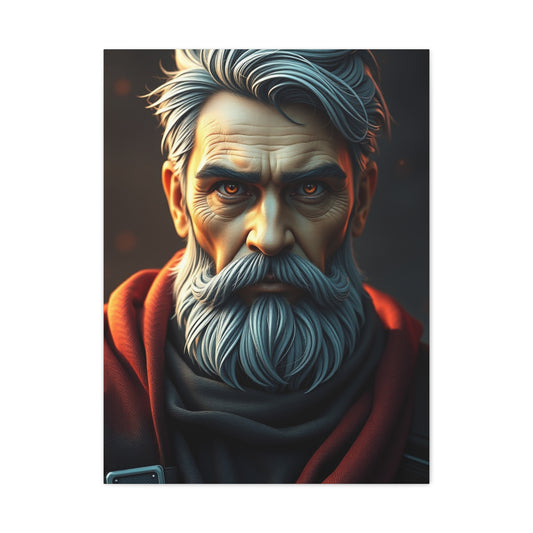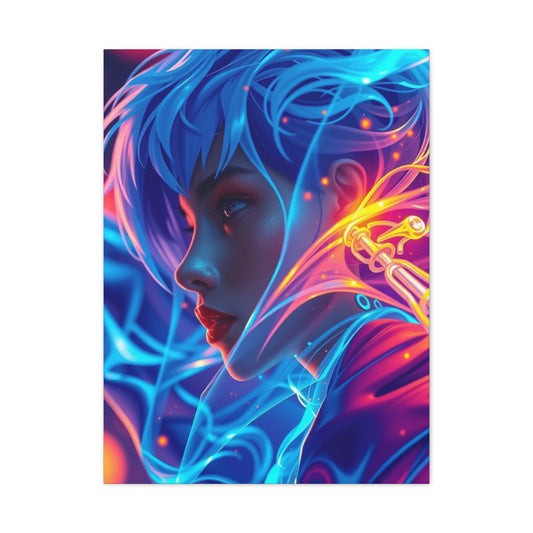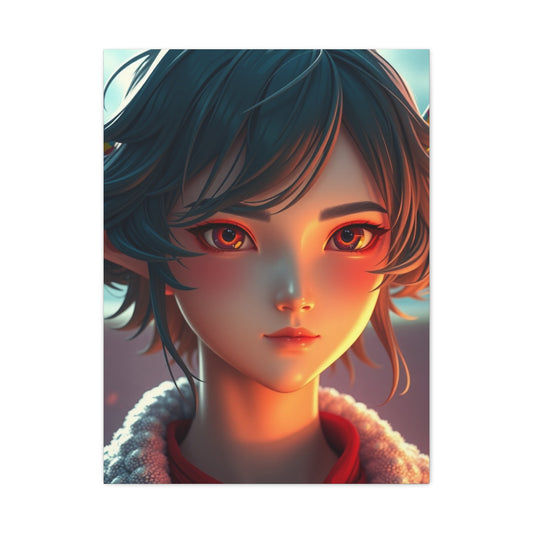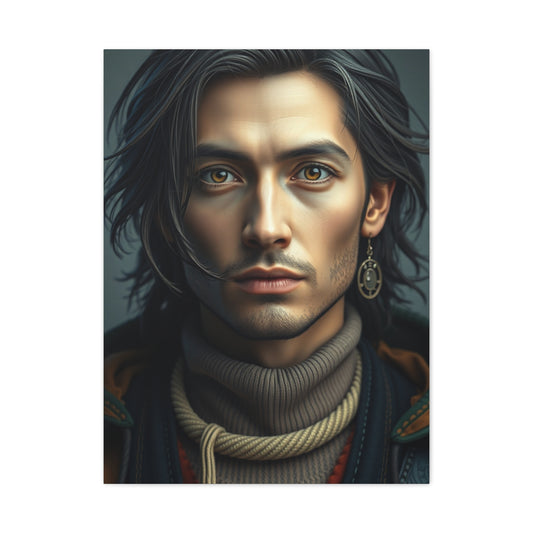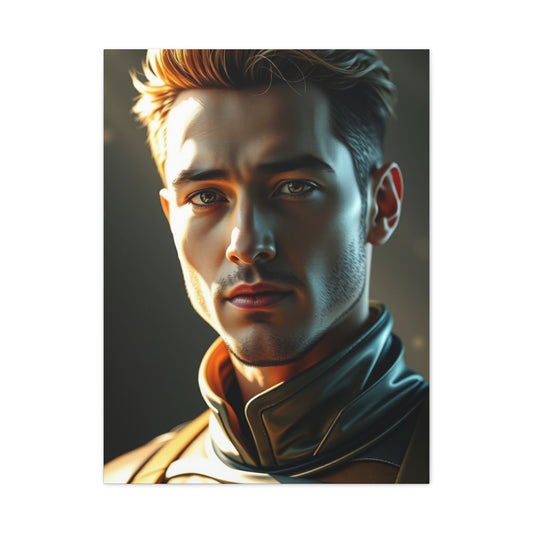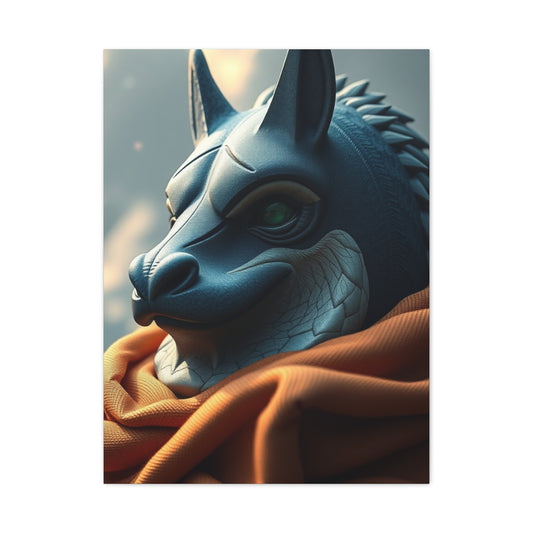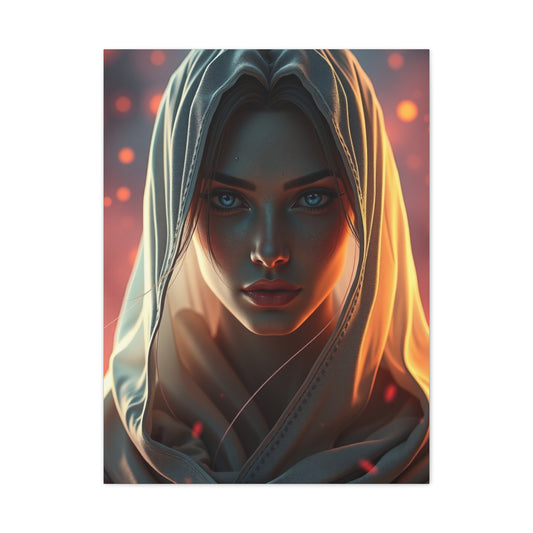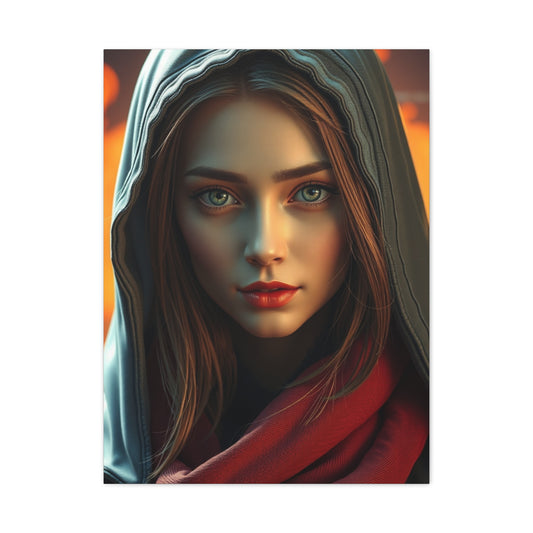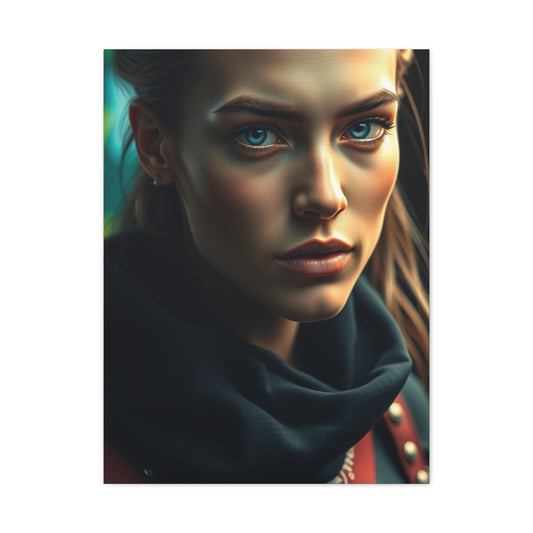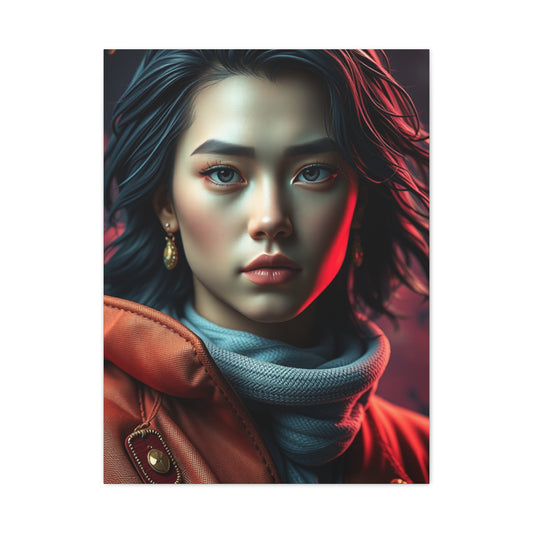An Introduction to the Expansive Universe of Computer-Generated Artwork
In today’s fast-paced, technology-driven world, the concept of art has undergone a profound transformation. No longer confined to traditional canvases, clay, or paint, artistic expression has ventured boldly into the digital sphere, giving rise to an expansive universe known as computer-generated artwork, often abbreviated as CG art. This innovative form of creation exemplifies the fusion of artistry and technology, where imagination is no longer limited by physical media but is instead amplified by sophisticated software, advanced algorithms, and powerful computing systems.
Many individuals may recognize the term CGI—Computer-Generated Imagery—primarily through its ubiquitous presence in blockbuster films, animation, and cinematic visual effects. However, the realm of CG art extends far beyond motion pictures. It encompasses an extraordinary range of disciplines and applications, from meticulously crafted 2D illustrations and stylized concept art to intricate 3D modeling, virtual environments, and hyper-realistic simulations. At its core, CG artwork represents any visual creation produced, manipulated, or enhanced digitally, highlighting the artist’s mastery over both creative vision and technical execution.
CG artists, the pioneering visionaries of this domain, occupy a unique space at the intersection of creativity and technology. Unlike traditional artists who rely solely on brushes, chisels, or pencils, these creators harness the power of digital tools to translate abstract ideas into tangible, visual experiences. They leverage specialized software such as Blender, Maya, ZBrush, or Adobe Creative Suite, alongside cutting-edge hardware, to craft everything from fantastical worlds in video games to photorealistic architectural renderings and immersive cinematic sequences. Each piece is not merely a digital product but a testament to the meticulous planning, technical skill, and boundless imagination that define this field.
The influence of CG art is pervasive, extending across multiple industries and reshaping the way we perceive visual storytelling. In the world of gaming, it brings characters, landscapes, and narratives to life in ways that engage players on an emotional and interactive level. In film and television, it enables filmmakers to construct awe-inspiring visual spectacles that defy the constraints of physical reality. Architecture and interior design benefit from CG art through realistic visualizations, allowing clients and designers to explore spaces long before a single brick is laid. Beyond commercial applications, CG art has found a voice in fine art, digital exhibitions, and virtual galleries, where artists experiment with form, light, and texture in ways previously unimaginable.
The evolution of computer-generated art is a compelling narrative of innovation and experimentation. From the rudimentary algorithmic designs of the mid-20th century to the immersive, photorealistic environments of today, CG art has continuously expanded the boundaries of what is possible. Its growth is not just a story of technical advancement but of human ingenuity, reflecting how creativity adapts and flourishes alongside evolving technologies. Techniques such as procedural generation, motion capture, 3D sculpting, and AI-assisted rendering have opened new avenues for exploration, offering artists unprecedented freedom to push the limits of their craft.
This comprehensive exploration aims to celebrate the artistry and innovation inherent in the CG art world. By tracing its historical development, examining the diverse methods and stylistic approaches employed by contemporary digital creators, and showcasing exemplary works from across the globe, we hope to illuminate the profound impact of computer-generated art. These works not only demonstrate technical proficiency but also embody a new form of visual storytelling, where imagination meets computation to create experiences that are at once immersive, evocative, and transformative.
The Genesis and Evolution of Computer-Generated Art
The story of computer-generated (CG) art is a fascinating journey at the intersection of technology and creativity. It reflects how human ingenuity, coupled with advances in computing, has continuously expanded the boundaries of artistic expression. While art has always evolved alongside new tools and materials, the emergence of computers as a medium marked a revolutionary shift, redefining what art could be and who could create it.
The origins of CG art date back to the mid-20th century, a time when computers were largely seen as machines for numerical computation rather than instruments of aesthetic creation. Early experiments were primarily carried out by scientists, mathematicians, and engineers who were curious about visualizing data and patterns. These initial explorations were remarkably inventive given the limited technology of the time. Artists and programmers worked with primitive computers, punch cards, and plotters—machines designed for printing graphs and charts—to produce abstract forms, intricate geometric patterns, and simple animations. While these creations may appear simplistic by today’s standards, they laid the groundwork for a completely new artistic language, one in which algorithms could generate beauty as easily as numbers.
By the 1960s, a new wave of visionaries began to explore the creative potential of computers more deliberately. Figures such as John Whitney Sr., often hailed as a pioneer of digital art, experimented with analog computers to produce mesmerizing, moving abstract visuals. These early works were not just technical experiments; they were deeply artistic, blending rhythm, motion, and symmetry in ways that had never been possible before. Whitney’s efforts demonstrated that computers could be more than mere calculating devices—they could be collaborators in the creative process.
The 1970s and 1980s witnessed remarkable advancements in both hardware and software, which further expanded the possibilities of computer art. As computing power increased and graphics capabilities became more sophisticated, artists were able to experiment with richer textures, more complex animations, and interactive digital installations. During this period, the lines between art, design, and technology became increasingly blurred, giving rise to what would eventually be recognized as digital and media art.
The democratization of computing in the 1980s and 1990s marked a turning point in the evolution of CG art. The proliferation of personal computers, alongside the emergence of user-friendly graphic software, allowed a much broader audience to engage with digital creation. Artists no longer required access to specialized research labs or expensive mainframes; they could explore their visions from the comfort of their own studios. The growth of the internet further accelerated this shift, fostering global communities of digital creators who shared techniques, collaborated on projects, and pushed the boundaries of the medium. This era also witnessed the integration of CG art into mainstream culture, from music videos and advertisements to video games and cinematic special effects.
Today, computer-generated art exists in an extraordinarily diverse array of forms, spanning hyper-realistic 3D renderings, generative art powered by complex algorithms, immersive virtual reality environments, and AI-assisted creations. Contemporary CG artists wield tools that are more powerful and intuitive than ever, enabling them to produce works of astonishing complexity, detail, and emotional resonance. Beyond technical prowess, the digital medium has inspired new artistic philosophies, questioning traditional notions of authorship, originality, and the role of technology in creativity.
The Diverse Forms and Techniques of CG Artwork
Computer-generated artwork is far from a single, uniform medium; it is a rich and multifaceted domain that encompasses a wide spectrum of disciplines, each with its own specialized techniques, tools, and aesthetic philosophies. Digital artists often dedicate themselves to mastering a particular form of CG art, developing expertise in the software, workflows, and creative strategies that define their niche. The result is an incredibly varied artistic landscape, ranging from intricate digital illustrations to immersive three-dimensional environments and stylized retro-inspired creations.
One of the most widely practiced branches of CG art is digital illustration and painting. In this realm, artists leverage software that simulates traditional artistic tools such as oil paints, watercolors, charcoal, and pencils, all within a virtual canvas. This approach provides a level of flexibility and freedom impossible with physical media. Mistakes can be undone instantly, layers can be worked on non-destructively, and an almost limitless spectrum of colors, textures, and brushes is always at the artist’s fingertips. Digital painting is particularly prominent in the creation of concept art for films, television, and video games. Here, artists visualize characters, landscapes, and complex scenes long before any real-world production begins, effectively shaping the narrative and mood of entire projects with a few strokes of a stylus or mouse.
In contrast, three-dimensional (3D) modeling and rendering represent a highly technical and sophisticated form of CG artwork. Artists in this field sculpt virtual objects, characters, and environments with painstaking attention to detail, using specialized programs such as Blender, Maya, or ZBrush. Once modeled, these digital creations are textured, rigged for animation, and rendered to produce either static images or dynamic sequences. This discipline requires not only artistic vision but also a deep understanding of physics, lighting, materials, anatomy, and composition. The end results are astonishingly lifelike—or fantastically imaginative—ranging from mythical creatures and photorealistic characters in blockbuster films to architectural visualizations that bring conceptual structures to life. The process of 3D creation is a perfect marriage of technology and creativity, where software serves as the medium, but the artist’s insight dictates the final outcome.
Beyond painting and 3D rendering, other forms of CG artwork have their own distinctive charm and applications. Vector art, for instance, relies on mathematical equations to create precise, scalable shapes and lines. Its clean, crisp aesthetic makes it ideal for graphic design applications such as logos, branding, infographics, and illustrations that need to maintain quality at any size. Pixel art, on the other hand, embraces a deliberately retro aesthetic, building images one pixel at a time. This painstakingly detailed method evokes nostalgia for early video games while offering a unique stylistic expression that has seen a revival in indie gaming, digital storytelling, and social media graphics.
What unites these diverse approaches is the recognition that computers are merely instruments; the essence of CG art resides in human creativity and vision. The technical complexity of the software, the precision of digital tools, and the vast array of digital resources all serve to enhance what the artist can conceive and execute. In essence, the computer amplifies the artist’s imagination, providing unprecedented freedom to experiment, iterate, and innovate.
The breadth of CG artwork demonstrates the versatility and adaptability of digital media as an artistic platform. Whether it is the emotive strokes of a digital painter, the meticulous construction of a 3D environment, or the stylistic charm of pixel and vector art, each form contributes to a broader ecosystem where creativity is only limited by the artist’s ingenuity. By exploring these varied techniques, one gains a profound appreciation for the skill, patience, and artistry required to excel in the rapidly evolving realm of computer-generated art.
Character Design and Narrative Illustration
Among the many luminaries in the world of computer-generated art, Trent Kuniga stands out for his exceptional ability to merge technical mastery with storytelling brilliance. His work demonstrates how CG art transcends mere visuals, becoming a powerful vehicle for narrative expression. Kuniga’s creations are not only visually captivating but also deeply rooted in personality, history, and cultural influence, offering audiences more than just images—they encounter characters who feel alive, worlds that breathe, and stories that resonate long after the first glance.
One of the most notable examples of Kuniga’s artistry is Master Dou, a central figure in his acclaimed comic series Twilight Monk. At first glance, Master Dou may appear to be just another martial arts archetype, but under Kuniga’s skilled hand, the character becomes something far more layered and compelling. Dou is depicted as a wise and seasoned Kung Fu master, his presence radiating authority, resilience, and warmth. Every aspect of the character—his posture, expressions, attire, and environment—reflects a sense of history, as if he has lived through countless trials and carries with him the wisdom of a thousand stories. This attention to detail transforms Master Dou into more than a figure on a page; he is a narrative force, embodying the values of discipline, perseverance, and mentorship.
Kuniga achieves this richness of character through a combination of dynamic linework, atmospheric lighting, and intricate design elements. His illustrations exhibit a remarkable balance of precision and fluidity, where bold outlines guide the eye while subtle details enrich the narrative. Lighting is particularly significant in Kuniga’s work; by manipulating shadows, highlights, and gradients, he conveys mood and atmosphere that heighten the emotional impact of each scene. Whether Master Dou is shown in quiet contemplation under a dimly lit lantern or in action against a vibrant backdrop of combat, the lighting reinforces the story being told.
In addition to technical skill, what sets Kuniga apart is his narrative intuition. He understands that a character is not just a collection of lines and colors but a vessel for storytelling. Through his art, Kuniga weaves backstory and emotional resonance directly into the visual design. Small details—such as the wear on a garment, the expression in a character’s eyes, or the placement of symbolic motifs—serve as cues that invite viewers to imagine the broader world and history surrounding the character. This approach mirrors the traditions of classical illustration while pushing them into the digital realm, proving that CG art is every bit as capable of narrative depth as traditional painting or hand-drawn comics.
Moreover, Kuniga’s work exemplifies the fusion of Eastern and Western storytelling traditions. His characters, settings, and themes often draw from martial arts philosophy, mythology, and fantasy lore, while his visual style reflects a modern, globally accessible aesthetic. This hybridization allows his work to appeal to diverse audiences, connecting with readers across cultural boundaries while still retaining a unique identity.
What makes Trent Kuniga’s contributions especially significant in the broader CG art community is his role as both a creator and a mentor. His projects, including Twilight Monk, inspire not only fans but also aspiring digital artists, showcasing how creativity and technical skill can be harmonized to produce meaningful, story-driven art. By openly sharing his process and engaging with audiences, Kuniga reinforces the idea that computer-generated art is not a sterile, mechanical output but a deeply human form of expression enhanced by digital tools.
Ultimately, Kuniga’s character design and narrative illustrations stand as a testament to the storytelling power of CG art. Characters like Master Dou remind us that even in the digital age, audiences crave stories that feel personal, emotional, and authentic. Through his meticulous designs and narrative insight, Trent Kuniga proves that the future of art lies not in choosing between tradition and technology, but in blending them to create works that inspire, resonate, and endure.
Vibrant Energy and Color
Among the new generation of digital artists who are shaping the visual language of games and modern fantasy worlds, Brazilian illustrator Mike Azevedo stands out as a beacon of creativity, energy, and artistic versatility. Renowned internationally for his dazzling use of color and his ability to infuse life into characters, Azevedo has become a reference point for how computer-generated (CG) art can reach beyond technical boundaries and touch the realm of true visual storytelling. His portfolio resonates with vitality, vibrancy, and narrative depth, making his work not just an exercise in design but also a celebration of artistic imagination.
One of Azevedo’s most notable contributions is his creation of Padrya, a character developed for the game WickedFun. At first glance, Padrya embodies an appealing sense of cuteness, drawing viewers in with charming proportions and a whimsical aura. Yet, beneath this exterior lies an undeniable sense of danger and lethal energy. It is this paradoxical fusion of innocence and menace that makes Padrya unforgettable. By juxtaposing elements that are seemingly opposed—softness against ferocity, charm against threat—Azevedo demonstrates his keen understanding of visual contrast as a storytelling tool. This approach not only captivates the eye but also evokes curiosity about the character’s backstory, abilities, and role within the larger narrative universe.
A defining hallmark of Azevedo’s artistry lies in his mastery of color theory. His palette choices often seem electric, pulsing with life and movement. He leverages complementary hues, tonal shifts, and light saturation to guide the viewer’s gaze and to heighten emotional impact. Whether he is painting the fiery glow of an enchanted weapon, the delicate highlights on a character’s armor, or the subtle interplay of shadows on skin, every decision is deliberate. His painterly style draws on both traditional fine art sensibilities and the cutting-edge tools of digital creation, resulting in compositions that are simultaneously timeless and modern.
Beyond technical brilliance, what sets Azevedo apart is his ability to infuse his work with narrative richness. Each illustration he creates is more than an image; it is a story frozen in time. Viewers do not merely see Padrya as a figure—they imagine her battles, her allies, her journey. This narrative quality is a hallmark of effective CG art, and Azevedo demonstrates how illustration can operate as a bridge between design and storytelling. In doing so, he reveals that digital art is not simply about producing polished visuals; it is about conveying meaning, emotion, and character essence in ways that linger with the audience.
Environmental and Landscape Mastery
Within the diverse field of computer-generated artwork, few artists capture the grandeur and mystery of landscapes quite like Tyler Edlin. Known for his extraordinary ability to create vast, immersive environments, Edlin has established himself as a master of environmental storytelling. His work demonstrates that landscapes are not merely backdrops; they are living, breathing entities that set the tone for entire narratives, evoking awe, wonder, and emotion. Through a careful interplay of light, shadow, and atmospheric effects, Edlin transforms digital canvases into expansive worlds that invite exploration and spark the imagination.
One of the most striking examples of his artistry is the piece “Into the Depths,” created for Encounters With the Imaginary. This work exemplifies the immersive qualities that define Edlin’s style. The composition transports viewers into a scene of both beauty and enigma, where towering forms, mysterious depths, and carefully layered details construct a sense of scale that feels larger than life. By using atmospheric perspective—the gradual fading of colors and details as objects recede into the distance—Edlin successfully conveys depth and realism, pulling the viewer into the heart of the imagined world. His keen understanding of lighting further enhances this effect; the delicate balance between illumination and shadow adds dimension, mood, and a touch of the sublime, making the landscape feel at once fantastical and believable.
What sets Edlin apart is not simply his technical mastery but his story-driven approach to environment design. Each mountain ridge, winding river, or distant horizon is placed with narrative intent, suggesting unseen histories and hidden adventures waiting to unfold. His environments rarely stand alone as static visuals; instead, they function as stages upon which countless untold stories could emerge. For audiences, this transforms the viewing experience from passive observation into active imagination, as they instinctively begin to populate the world with characters, events, and possibilities.
Beyond the aesthetic brilliance of his finished pieces, Edlin is also deeply committed to education and community engagement within the CG art world. Recognizing the challenges faced by aspiring digital artists, he frequently shares tutorials, process videos, and behind-the-scenes breakdowns of his workflow. These resources demystify the technical aspects of environment design, offering guidance on composition, color theory, atmospheric perspective, and efficient digital painting techniques. By making his methods accessible, Edlin empowers emerging artists to build their skills, experiment with their own ideas, and gain confidence in navigating the complexities of digital art software.
This commitment to teaching reflects Edlin’s belief that art is not just about individual achievement but also about fostering a collective spirit of collaboration and growth. His willingness to share knowledge has made him a respected mentor figure in the digital art community, inspiring countless creators across the globe. Through workshops, online platforms, and social media engagement, he bridges the gap between professional artistry and beginner curiosity, nurturing a culture of openness and continuous learning.
Edlin’s contributions underscore the evolving role of the digital artist in the 21st century. In today’s interconnected creative ecosystem, the most impactful artists are not only those who produce exceptional work but also those who contribute to the growth and sustainability of their communities. By balancing his own artistic pursuits with a dedication to mentorship, Edlin exemplifies how individual success can ripple outward, enriching the broader world of CG art.
Cultural Heritage in CG Art
One of the most fascinating aspects of computer-generated art is its ability to preserve, reinterpret, and breathe new life into cultural traditions. Turkish artist Ibrahim Hakki Uslu offers a compelling example of how digital creativity can serve as a powerful vessel for storytelling rooted in heritage. His concept piece titled “Shaman” goes beyond simple character design—it represents a dialogue between the past and the present, between myth and technology.
In “Shaman”, Uslu draws inspiration from motifs deeply embedded in Turkish folklore and shamanistic traditions. Ancient cultures often expressed their beliefs through symbols, costumes, and ritualistic figures, and Uslu brings these elements forward into a modern context by weaving them seamlessly into a digital composition. The character he creates is not merely a reimagining of a historical figure, but a figure that feels alive and timeless, as though it could step directly from an ancestral tale into a contemporary fantasy world. By doing so, he illustrates how CG art is uniquely positioned to keep heritage relevant while engaging audiences accustomed to digital media.
What makes Uslu’s work especially significant is his ability to balance authenticity with innovation. Rather than replicating cultural symbols in a static or purely decorative way, he integrates them into the very identity of the character. The textures, patterns, and color schemes pay homage to traditional artistry, while the digital rendering techniques highlight the dynamism and detail possible through modern technology. This dual approach ensures that the artwork respects its cultural origins while also captivating global audiences who may have little prior knowledge of Turkish myths.
Beyond aesthetics, works like “Shaman” demonstrate how CG art can become a bridge between generations. Younger audiences, who may not have direct exposure to traditional folklore, can connect with these stories through engaging and visually rich reinterpretations. At the same time, older generations may find comfort and pride in seeing their cultural symbols preserved in a new form that ensures their longevity. This kind of cross-generational dialogue strengthens cultural identity while broadening its reach.
Uslu’s vision highlights a broader truth: CG art has the power to make cultural heritage universal. Myths, legends, and traditions that once belonged to a particular community can be reintroduced to the world stage, accessible to anyone with a screen. In this sense, digital art does not replace heritage but revitalizes it, ensuring that cultural memory continues to thrive in a constantly evolving creative landscape.
Epic Digital Landscapes
When speaking about the evolution of digital art, particularly in the realm of environmental design, it is impossible to ignore the sweeping influence of artists who have successfully bridged technical skill with storytelling. One such figure is Marc Brunet, whose work “The Titans’ Tomb” has become a standout example of what epic digital landscapes can achieve. This piece, created as part of his ART School for Digital Artists, is more than just a visual showcase; it represents a masterclass in blending imagination, technical execution, and narrative depth into one monumental composition.
At first glance, “The Titans’ Tomb” immediately impresses with its sheer scale. Brunet’s scene conveys a sense of grandeur that is both awe-inspiring and slightly unsettling, as if the viewer has stumbled upon the forgotten remnants of a long-lost civilization. Towering structures rise against a dramatic backdrop, hinting at ancient powers and mythic histories that transcend the frame itself. This sense of scale is not accidental. By employing advanced CG techniques—careful use of perspective, atmospheric depth, and lighting—Brunet guides the viewer’s eye across the environment, leading them deeper into the mystery of the tomb.
The architectural detailing in the piece is one of its most compelling features. Far from being generic ruins, the structures evoke a rich cultural narrative, with motifs and designs that hint at both functionality and ritualistic importance. Each stone, arch, and pillar carries weight, not just in terms of physical structure but also in terms of the story they silently tell. Brunet succeeds in making the architecture itself a character within the narrative, reinforcing the idea that digital environments can serve as storytellers in their own right.
What sets Brunet’s work apart is his process, which is as meticulous as it is creative. Beginning with loose sketches, he lays down the foundations of composition and balance, ensuring that every element contributes to the overall harmony of the scene. These early steps are not simply technical exercises but explorations of mood and intent. By experimenting with rough thumbnails and silhouettes, Brunet establishes the emotional core of the piece before diving into finer detail. This approach demonstrates the power of iteration in digital art, where ideas can be tested, modified, and refined with fluidity thanks to modern CG tools.
Once the basic structure is set, Brunet transitions into developing textures, lighting, and atmosphere. Here, his mastery of digital brushes, layering techniques, and rendering software comes to the forefront. The mist that lingers around the tombs, the interplay of shadow and illumination across the massive stone surfaces, and the subtle color gradients all combine to create a sense of depth that feels almost cinematic. It is this attention to atmospheric detail that transforms “The Titans’ Tomb” from a static image into an immersive experience—one that draws viewers into its world and holds them there.
Equally important is the narrative embedded within the artwork. Though no characters populate the frame, the environment suggests their presence—or their absence. The tomb itself speaks of colossal beings, titans whose time has passed but whose legacy endures in stone. This interplay between absence and presence is a hallmark of Brunet’s storytelling. The viewer is invited to imagine what once was, to speculate about the beings who built such monumental structures, and to piece together the fragments of a story that exists just beyond reach.
The Future of Computer-Generated Art: AI, VR, and Beyond
The field of computer-generated art is in a state of constant evolution, propelled by the rapid pace of technological innovation. What was once confined to static 2D images or pre-rendered 3D models has grown into an expansive, ever-adapting landscape where new tools and platforms continuously redefine what artists can achieve. Looking ahead, the future of CG art promises to be more transformative than ever, as emerging technologies such as artificial intelligence (AI), virtual reality (VR), and augmented reality (AR) open unprecedented avenues for creative exploration.
Artificial intelligence is already beginning to reshape the boundaries of what constitutes digital art. Generative AI models, powered by complex neural networks, can produce highly sophisticated images and visual concepts from simple text prompts or rough sketches. These AI-driven tools allow artists to experiment with styles, compositions, and aesthetics at speeds previously unimaginable. By automating repetitive tasks, generating multiple iterations of a concept, or offering stylistic suggestions, AI serves as both collaborator and catalyst, enabling artists to push their creative vision further. Yet this technology also raises critical questions regarding authorship, originality, and the definition of the human artist.
Virtual reality and augmented reality are poised to revolutionize not only the production but also the experience of digital art. Unlike conventional flat-screen interfaces, VR provides artists with a three-dimensional workspace in which they can sculpt, paint, and manipulate objects in an immersive environment. This hands-on, spatial approach mirrors physical artistic processes while allowing for limitless experimentation and scale. Augmented reality, meanwhile, overlays digital creations onto the real world, creating hybrid experiences that merge tangible and virtual spaces. Together, these technologies enable entirely new forms of expression: interactive sculptures that respond to viewers’ movements, dynamic installations that evolve over time, and immersive environments that invite audiences to step inside the artwork itself.
The convergence of AI, VR, and AR points toward a future in which CG art becomes increasingly collaborative, both between humans and machines and across the digital and physical realms. Artists will have the ability to design fluid, interactive environments that react to user input, create artworks that evolve autonomously, and prototype projects in real time with a level of precision and flexibility unattainable through traditional methods. This evolution will also influence how art is consumed: exhibitions may exist simultaneously in physical galleries and virtual worlds, while collectors, viewers, and participants experience the work in ways tailored to their interactions.
The Cultural Significance and Enduring Value of CG Artwork
Computer-generated (CG) artwork is far more than a display of technical skill or aesthetic beauty. It represents a profound cultural phenomenon that reflects how humans engage with visual storytelling in the modern era. CG art is the language through which we construct fantastical film worlds, immersive video game universes, and visually compelling narratives across advertising, design, and interactive media. Its significance lies not only in its visual impact but also in the ways it shapes our collective imagination and preserves the spirit of contemporary culture.
At its core, CG art serves as a dynamic platform for narrative exploration. From blockbuster movies to indie video games, it enables creators to construct worlds that would be impossible in the physical realm. Characters, environments, and scenarios designed in digital spaces can evoke emotion, tension, humor, and wonder just as effectively as traditional storytelling methods. The medium allows artists to experiment with movement, lighting, and perspective in ways that amplify the narrative experience, giving audiences immersive journeys that extend beyond passive observation into interactive engagement.
One of the most remarkable aspects of the CG art world is its culture of collaboration and knowledge-sharing. Unlike many creative fields where techniques and methodologies are closely guarded, the digital art community thrives on openness. Online forums, social media platforms, and tutorial websites provide spaces for artists worldwide to exchange ideas, showcase their work, and mentor emerging talent. This cooperative environment fosters innovation and creates a sense of camaraderie rarely seen in other disciplines. It allows diverse voices to contribute to the evolution of the medium, blending cultural perspectives and artistic approaches into a rich, global tapestry of creativity.
CG artwork is more than visual entertainment—it is a reflection of our era. Each piece represents a fusion of human imagination and technological advancement, serving as a cultural artifact that captures the spirit, values, and ambitions of contemporary society. Whether it’s a meticulously designed video game character, a cinematic concept sketch, or an interactive installation, CG art embodies the intersection of art, technology, and storytelling. It provides future generations with a window into the creative and technological capabilities of our time, preserving the ingenuity and aspirations of the digital age.
As technology advances, the tools available to CG artists are becoming increasingly powerful and intuitive. Modern software, AI-assisted design, and high-performance hardware allow creators to explore ideas with unprecedented speed, precision, and flexibility. From handheld devices to virtual reality platforms, CG art is increasingly integrated into our daily experiences, shaping the way we interact with media and digital environments. The evolution of these tools not only enhances the quality of artwork but also expands the possibilities for storytelling, experimentation, and personal expression.
The work of influential CG artists such as Trent Kuniga, Mike Azevedo, and Jama Jurabaev exemplifies the enduring cultural value of this medium. These creators do more than produce visually stunning images—they establish legacies of innovation, experimentation, and artistic excellence. Their contributions inspire countless other artists, pushing the boundaries of what digital media can achieve. Each work becomes part of a larger narrative, a testament to the creativity, skill, and dedication that define the global CG community.
Conclusion
The realm of computer-generated artwork has emerged as one of the most dynamic and transformative forces in modern creativity, redefining not only how art is produced but also how it is experienced and understood. What began in the mid-20th century as a niche experiment—where mathematicians and computer scientists used algorithms to generate rudimentary patterns—has blossomed into a global artistic movement that bridges science, technology, and imagination. Today, CG artwork is no longer a novelty; it is a mainstream medium that permeates virtually every aspect of visual culture, from entertainment and education to architecture and industrial design.
At the heart of this transformation lies the ingenuity of artists who have embraced digital platforms not as a replacement for traditional techniques, but as an expansion of the creative toolkit. Visionaries such as Trent Kuniga, Mike Azevedo, and Jama Jurabaev exemplify how computer-generated art has evolved into a mature artistic discipline. Their works are not merely digital files stored on a hard drive—they are vibrant cultural artifacts that reflect narratives, emotions, and artistic philosophies unique to our era. Through their mastery of light, texture, composition, and storytelling, these creators prove that technology, when wielded with imagination, can elevate artistry to extraordinary heights.
The ability of CG artists to conjure fully realized worlds from scratch has fueled some of the most memorable cultural milestones of our time. The fantastical landscapes of blockbuster films, the immersive universes of video games, and the photorealistic renderings used in architecture all stand as testaments to the versatility and power of this medium. By blending technical precision with expressive storytelling, CG artwork has become the visual language of the digital age, shaping how stories are told and how audiences connect with them.
Equally significant is the democratization of digital art. With accessible software, powerful yet affordable hardware, and the rise of online learning platforms and communities, aspiring artists from across the globe can now enter the field with fewer barriers than ever before. Online forums, tutorials, and digital marketplaces foster collaboration and knowledge-sharing, creating a thriving ecosystem where talent and innovation flourish. This collective spirit has ensured that the field of CG art remains not only technically advanced but also culturally diverse, representing voices and perspectives from every corner of the world.
Looking toward the future, the trajectory of computer-generated artwork points to even greater transformations. Artificial intelligence is already reshaping workflows, enabling artists to rapidly prototype, iterate, and explore styles with machine-assisted creativity. At the same time, virtual reality and augmented reality are unlocking new dimensions of interactivity, allowing audiences to step inside digital creations and engage with them on a deeply immersive level. These technologies promise to challenge traditional notions of authorship and redefine the relationship between artist, artwork, and viewer. In the coming decades, we can expect new genres to emerge—interactive installations, AI-driven generative worlds, and hybrid experiences that merge the digital with the physical.
Yet, despite these technological advancements, the enduring value of computer-generated artwork remains tied to its most fundamental quality: its ability to reflect the human spirit. The software may grow more sophisticated, and the hardware more powerful, but it is the creativity, imagination, and cultural perspective of the artist that breathe life into pixels and polygons. Each digital masterpiece, whether a photorealistic cityscape, a stylized character design, or a nostalgic piece of pixel art, serves as a mirror of our aspirations, our fears, and our collective vision for the future.
Ultimately, computer-generated art is far more than a technological achievement—it is a celebration of human creativity amplified by digital innovation. It demonstrates what becomes possible when artistry meets computation, when imagination is empowered by tools that remove physical constraints. As we stand at the threshold of a future defined by AI, immersive realities, and yet-to-be-discovered technologies, CG artwork will continue to evolve as both an artistic movement and a cultural phenomenon. Its significance lies not only in its aesthetic beauty but also in its capacity to embody progress, innovation, and the boundless potential of the human imagination in the digital age.

